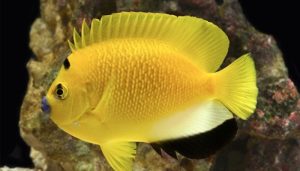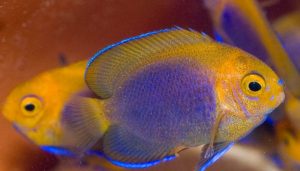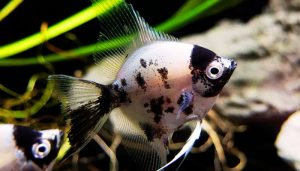How do you deal with the insane amount of Nerite Snail Poop? If you’re a proud aquarist with Nerite snails in your tank, you’ve likely marveled at their algae-cleaning prowess. But there’s another side to these little workers that every aquarist quickly discovers—the sheer amount of Nerite Snail Poop!
These snails are masters at keeping tanks spotless, but their cleaning efforts come with an equally impressive output.
As their tiny bodies tirelessly consume algae, they leave behind trails of waste that can accumulate faster than you’d expect.
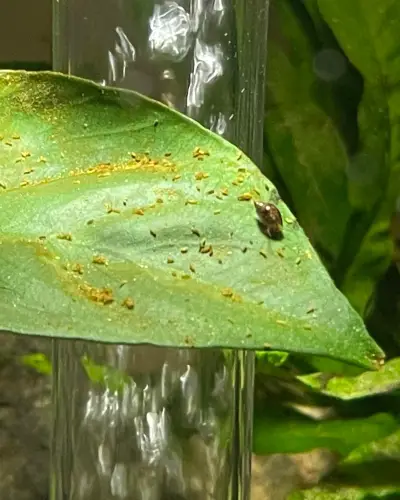
So, how do you keep your aquarium clean without compromising the benefits these snails bring? Is there a way to manage their waste effectively while maintaining a balanced ecosystem for your tank?
Whether you’re battling an endless sprinkle of snail droppings on your substrate or wondering if there’s a way to reduce the mess, this guide has you covered. In this post, we’ll explore why Nerite snails produce so much waste, the impact it has on your tank, and, most importantly, practical strategies to deal with it.
Stick around to discover how to strike the perfect balance between enjoying your snails and maintaining a pristine aquarium!
Table of Contents
ToggleNerite Snail Poop or Eggs?
Nerite snails are known for their unique and colorful shells, but they also play an essential role in aquariums as they help keep the tank clean by eating algae. However, one of the downsides of having nerite snails in your tank is their prolific egg-laying behavior.
Their small and translucent eggs can be unsightly and difficult to remove from the tank glass and decorations. Many hobbyists also wonder about nerite waste and its impact on tank cleanliness.
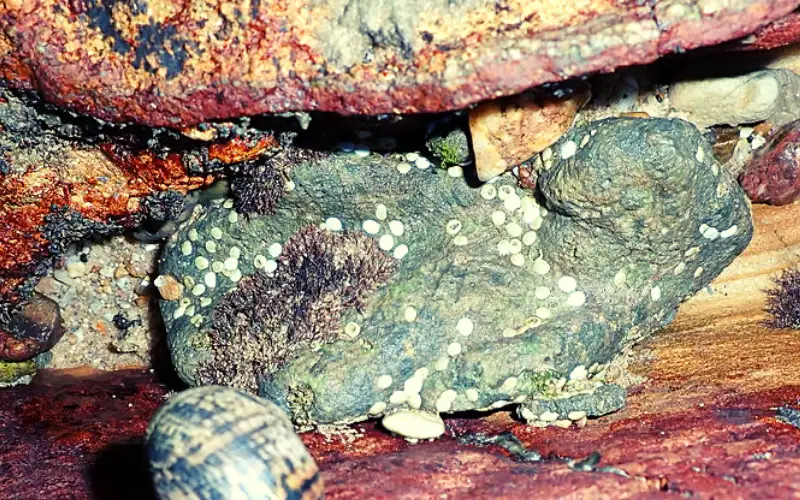
While it may not be as noticeable as fish waste, nerite snail poop can contribute to the overall waste buildup in the tank if not correctly managed. It’s a good idea to regularly clean the tank to remove excess waste, including nerite snail white poop, to maintain a healthy environment for your aquatic pets.
While nerite snails are valuable members of the aquatic ecosystem, they must be mindful of their reproductive habits and waste output.
Do Nerite Snails Poop a Lot?
Yes, Nerite snails are known for being prolific poopers! They are constantly munching on algae, biofilm, and other organic matter in your tank, and all that digestion leads to a lot of waste.
Here’s what you need to know:
- Amount: Prepare to see quite a bit of snail poop. It might look like small, brown, or green strands or pellets scattered around your tank. Don’t worry; it’s harmless and beneficial for your aquarium ecosystem.
- Benefits: Though it may seem excessive, snail poop is actually a good thing! It acts as a natural fertilizer for your aquarium plants and helps break down waste in the tank.
- Cleaning: While the poop itself isn’t harmful, if you have a heavily stocked tank or a small filtration system, the sheer volume of waste can impact your water quality. Regular partial water changes and gravel vacuuming are essential to keep things in check.
Here are some additional points to consider:
- Individual differences: Some Nerite snails might seem to poop more than others. This can vary depending on their size, activity level, and diet.
- Diet: If you supplement their diet with things like blanched veggies, you might see an increase in poop output.
- Tank size: A larger tank with a good filtration system can handle more snail poop more easily.
Overall, while pooping a lot is a normal and even beneficial part of being a Nerite snail, keep an eye on your water quality and adjust your cleaning routine as needed to maintain a healthy tank environment.
Why Do Nerite Snails Produce So Much Waste?
Why Do Nerite Snails Poop So Much? Nerite snails produce significant waste due to their constant feeding and digestion process. These snails are known for their voracious appetite and will consume a variety of algae, biofilm, and decaying plant matter in an aquarium or natural habitat.
As they consume and break down organic matter, they inevitably produce waste in the form of ammonia, nitrites, and nitrates, which are byproducts of their digestive process.
Additionally, Nerite snails are known for their prolific reproduction, and an increase in population means an increase in waste production. Their waste can contribute to the overall nutrient load in the aquarium or ecosystem, which can lead to water quality issues if not properly managed.
Therefore, aquarium hobbyists and aquarists must monitor water parameters and perform regular maintenance to ensure a healthy environment for Nerite snails and other tank inhabitants.
Is Snail Poop Bad for Aquarium Water Conditions?
In moderation, snail poop is not necessarily nasty for your aquarium water conditions. It can even be beneficial! Here’s why:
Benefits of Snail Poop:
- Nutrient source: Snail poop contains broken-down organic matter, which can be a source of nutrients for plants and beneficial bacteria in the aquarium. These bacteria help break down waste and keep the water clean.
- Food for other creatures: Certain aquarium animals, like shrimp and some fish, actually eat snail poop! They act as “clean-up crew” and help keep the tank tidy.
Possible Drawbacks:
- Excessive amounts: If you have a large number of snails or a small tank, the sheer amount of feces can become problematic. It can contribute to excess nutrients, leading to algae growth and water quality issues.
- Aesthetics: Many aquarists find snail poop unattractive and prefer to keep it to a minimum.
Ultimately, whether or not snail poo is bad for your aquarium water depends on the specific circumstances. Understanding the benefits and drawbacks and taking some simple management steps can ensure your snails contribute to a healthy and thriving tank environment.
3 Easy Tips for Managing Nerite Snail Poops and Excess Waste in Your Tank!
Managing nerite snail white poop and excess waste in your tank is essential for maintaining a clean and healthy aquatic environment. Here are three easy steps to help you with this:
1. Regular Tank Maintenance:
Perform regular tank maintenance to keep the water clean and minimize the accumulation of waste. This includes frequent water changes, substrate cleaning, and removing uneaten food or debris.
Use a gravel vacuum or siphon to remove excess waste and debris from the substrate during water changes. By maintaining a clean tank, you can prevent the buildup of snail poop and waste.
2. Optimize Feeding:
Overfeeding is a common cause of excess waste in the tank. Nerite snails are efficient algae eaters, and they will graze on the algae and biofilm present in the tank. Limit the amount of supplemental food you provide to avoid overfeeding.
Feed your snails small amounts of food, such as blanched vegetables or commercial snail food, and remove any uneaten fish food after a few hours. By reducing the amount of excess food, you can minimize the waste produced by the snails.
3. Increase Biological Filtration:
Enhancing the biological filtration in your tank can help break down waste more efficiently. Nerite snails produce waste in the form of ammonia, which can be toxic to fish and other aquarium inhabitants.
A well-established biological filter can convert ammonia into less harmful substances like nitrite and nitrate. Ensure that your tank has an appropriately sized and functioning filter, and consider adding beneficial bacteria supplements to boost the biological filtration capacity. This will aid in the breakdown of snail poop and other waste, helping to maintain water quality.
Remember, maintaining a clean and healthy fish tank is crucial for the well-being of your aquatic pets. By following these three steps, you can effectively manage zebra nerite snail poop and excess waste, promoting a clean and balanced aquarium environment.
Other Ways to Combat Nerite Snail Waste Buildup
In addition to regular water changes and tank maintenance, there are other methods to combat nerite snail waste buildup in your aquarium.
One option is introducing other tank inhabitants to help clean up the waste, such as shrimp or specific fish species like Corydoras catfish or Siamese algae eaters.
These scavengers can help clean the substrate and surfaces, reducing accumulated waste. Another approach is manually removing excess waste and algae from the tank using a gravel vacuum or algae scraper. This can help prevent waste from decomposing and causing further buildup.
Adjust your feeding schedule to reduce the amount of uneaten food in the tank, which can contribute to waste buildup.
Incorporating these methods into your aquarium maintenance routine can effectively combat nerite snail waste buildup and create a healthier environment for your aquatic pets.
Commonly Asked Questions about Dealing with Nerite Snail Poop in Home Tank (FAQs)
What do Nerites eat once the algae is gone?
Nerites consume biofilm and organic detritus as their primary food source when algae are no longer in their environment.
Do nerite snails eat fish poop?
Nope! Nerites prefer tastier treats. While they may scavenge some fish poop, it’s not their main course. Focus on algae wafers or veggies for happy snails!
What does nerite snail poop look like?
Nerite snail poop appears as small, dark brown, or black cylindrical pellets in the aquarium or tank where they reside.
Is snail poop dangerous?
Generally, no! Unlike some other garden critters, snail poop poses no direct threat to humans. But wash your hands after handling to avoid potential parasites.
What eats snail poop in an aquarium?
What will eat snail poop in aquarium? Detritus-eating organisms, such as certain species of shrimp, fish (like loaches), and some snails (like assassin snails), consume snail poop in aquariums.
Can snails affect betta fish?
Snails can sometimes affect betta fish by competing for food, potentially causing stress or injury. However, they can also have a symbiotic relationship by cleaning the tank.
Does snail poop cause ammonia?
Yes, snail poop contributes to ammonia, but in small amounts. Balanced tanks & beneficial bacteria convert it to harmless nitrates, so no worries!
Do you clean snail poop?
In most cases, no! Snail poop is food for other tank cleaners like bacteria & scavenger snails. But for large amounts or heavily stocked tanks, do occasional removal for water quality.
How do snails excrete waste?
Snails have an “anus” near their shell opening. Waste travels from their gut and exits and sometimes mixes with “breathing hole” discharge, appearing near the shell edge.
Why does mystery snail poops a lot?
Mystery snails are munch machines! They eat constantly, and that means… well, you guessed it, lots of poop! It’s mostly harmless and even helps plants, but adjust food based on tank size to avoid excess waste.
Conclusion
In conclusion, dealing with the excessive amount of Nerite snail waste in an aquarium can be a challenging task. One of the most effective ways to manage this issue is by regularly cleaning the aquarium and removing excess waste. Using a gravel vacuum to clean the substrate and performing water changes to remove accumulated waste can help keep the tank clean and reduce the amount of snail poop.
Additionally, adjusting feeding practices and being mindful of the amount of food given to the snails can help minimize the overall waste they produce. It’s also essential to ensure the aquarium has a balanced ecosystem with adequate filtration and aeration to support the natural breakdown of waste. With proper maintenance and management, the excessive amount of Nerite snail poop can be successfully addressed in an aquarium setting.
You might also like
- Nerite Snail Lifespan 101: Longevity Secrets & Care Tips
- The Best Zebra Nerite Snail Temperature (Expert Care Guide)
- Olive Nerite Snails 101: A Comprehensive Beginners Guide!
- Do Nerite Snails Reproduce Asexually: (Tips for Successful Breeding)
- Keeping Nerite Snail and Betta Fish Happy (Expert Tips)
- Nerite Snail Breeding 101: A Comprehensive Beginners Guide
- Zebra Nerite Snails Size 101: (Expert Care Guide & Tank Set Up)
- How Do Nerite Snails Breed: (The Ultimate Guide)
- What Fish Eat Nerite Snail Eggs: (Best & Effective Fish Species)
- Nerite Snail Not Moving: Is It Normal? (Causes & Quick Fix)
- Do Snails Eat Fish Poop in Aquarium: (The Truth Revealed)


